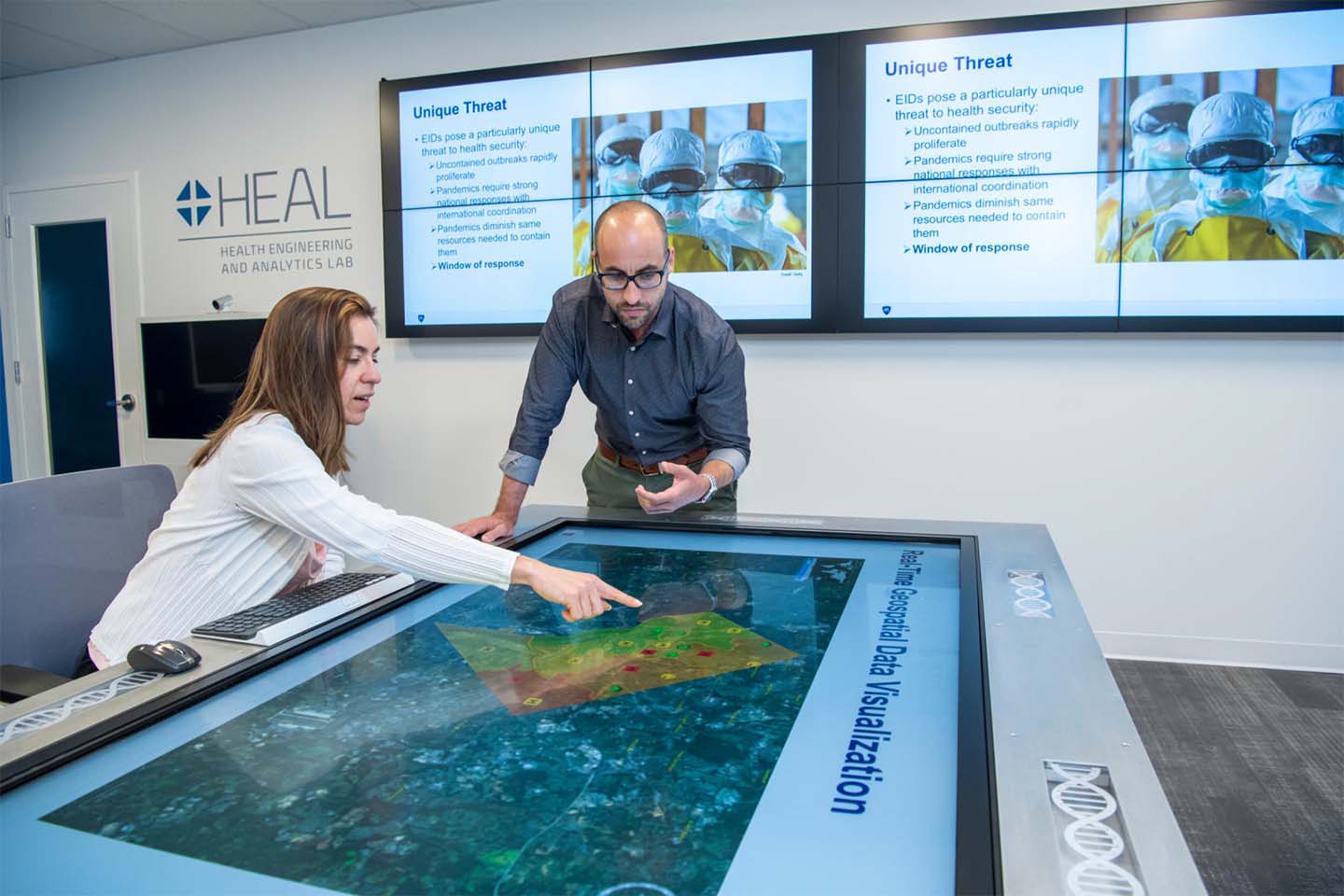Press Release
APL Health Initiative Targets Real-Time Disaster Response
When a natural disaster strikes, government agencies quickly activate a decentralized and often disparate network of response teams to collect, analyze and operationalize all types of data and information. However, current data-management strategies and traditional epidemiological methods are not well-equipped to deal with the growing complexities of today’s disaster landscape.
It’s exactly the kind of tough Big Data problem that APL’s Jeffrey D. Freeman is looking to solve, as he expands the Lab’s Health Surveillance program to tackle the challenges of disaster response. Freeman’s vision for disaster health at APL centers around the development of an intelligent and autonomous system that enables context-dependent situational awareness for emergency response and recovery during disasters and other public health emergencies.
“It’s not a long way off,” said Freeman, assistant program manager for Health Surveillance. “This is all technology that APL has at its fingertips; it’s just a matter of putting it together to match a sponsor’s disaster needs.”
One of Freeman’s goals is to include full automation of data intake, as well as rapid analysis and visualization of heterogeneous data, including free text, structured text, images, video, audio, radar, GPS and other data sources as defined by U.S. government agencies and other organizations involved in humanitarian assistance and disaster response.
“Advanced machine-learning methods such as deep learning, interoperable and autonomous data systems, and nontraditional data sources such as drone and LIDAR sensing can contribute enormously to the kinds of solutions sponsors are looking for,” Freeman said. As part of his model, core data functions could also be supported by SOCRATES, an APL-developed artificial intelligence suite of more than 200 machine-learning algorithms for conducting link inference, behavior analysis, probabilistic models, correlation analysis, centrality analysis and community finding, among other tasks. Operational capabilities will be specific to government challenges and will focus on the achievement of real-time situational awareness.
Freeman’s role in building the Disaster Health Initiative at APL is a diverse one — part scientist and researcher, part visionary, part diplomat and part collaborative team-builder — as he works to bring together a network of agencies, resources and technologies.
“The Laboratory’s ability to pull domain expertise from across APL and to solve the diverse set of problems that disasters pose using a multidisciplinary approach makes it a great fit for this kind of work,” Freeman said. “APL’s long history as a partner with government working to solve critical challenges puts the Lab in a great spot to help agencies innovate at a pace matching that of the growing complexities of disasters. Developing relationships with those government agencies immersed in this new space for APL is my number one priority right now.”
Freeman plans to leverage expertise gathered as a visiting scholar in the National Center for Disaster Medicine and Public Health (part of the Uniformed Services University), as well as his past experience as a research associate in the Johns Hopkins Center for Refugee and Disaster Response and as a research fellow in the Emergency Response and Recovery Branch of the Centers for Disease Control and Prevention.
Expanding APL’s capabilities to prepare and respond to disasters is a natural extension of the Lab’s work in health surveillance and its unique relationship with local, state and national authorities as a university affiliated research center. “Recent challenges following the Ebola outbreak in 2014 and the hurricanes in 2017 demonstrated that there are many opportunities where we can help to improve both preparedness for or response to events to restore the health of a community in a timely manner,” said Martina Siwek, APL’s Health Surveillance program manager. “Health is a key component of regional and country stability — humanitarian assistance and disaster response are critical activities where we know APL can make a significant impact in partnership with our government sponsors.”
APL’s National Health Mission Area aims to revolutionize health through science and engineering. The Laboratory focuses its work in this area on programs to predict and prevent illness, injury and disease; rapidly detect and respond to changes in health status; restore and sustain health; and improve overall health and human performance — leveraging expertise from across Johns Hopkins and APL to develop solutions that advance health and health care solutions for civilian, military and veteran populations worldwide.
